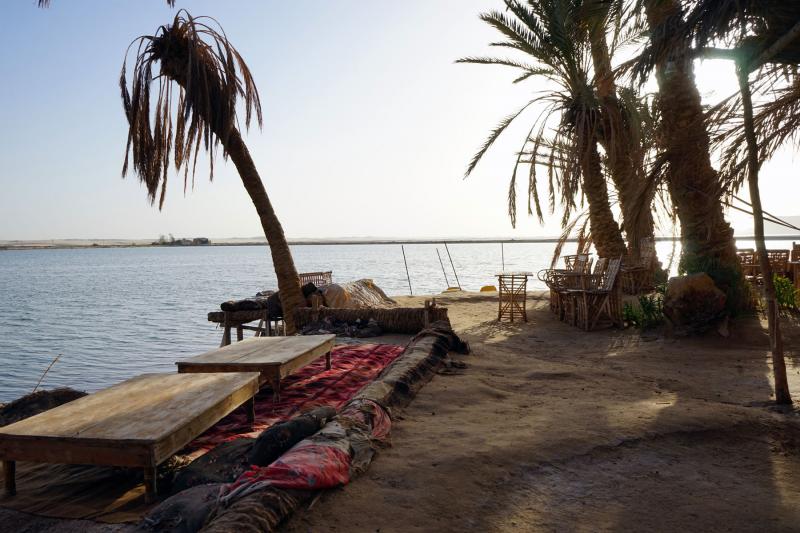

At first sight, the place seems to be a mirage of the crystal waters of any paradise beach but it is the Zeitoun Lake, the biggest salt lake in the Siwa Oasis.
The area, 50km from the Libyan border, has been isolated for centuries.
Even since it opened to tourism in the 1980s, it remained outside the major destinations in Egypt, which helped to maintain its fragile and distinguished ecosystem.
The combination of low annual rainfall and high rates of evaporation in the oasis results in lakes with unique water parameters and characterised by hyper-salinity.
Siwa lakes are considered to have healing properties for sinus, skin and eye conditions, which, added to the relaxing experience they offer because of its insulated location, have allowed the oasis to being promoted as a medical and recreational destination.
According to Director of Tourism in the Siwa Oasis, Mahdi Hwieti, “The salt lakes started to be visited [for medical purposes] about three years ago,” “Locals used to go there to wash the bodies of the children with problems in the skin, although some do it just for fun.”
Along with Zeitoun Lake, another significant salt lake in the oasis is Maraqi Lake, which is also known as Siwa or Fatnas Lake, on the western side of the oasis covering 5,300 hectares and which has the highest salt concentration. Aghormy Lake, between Zeitoun and Maraqi, has an area of 8,100 hectares and is used by local companies for health treatments.
“I came back [from Aghormy] care-free and relaxed. It fully changes you, from top to bottom,” said a tourist who had been in the lake for treatment and who preferred not to give his name. “I deeply benefited from it and the people who were with me out there could tell the same.”
Compared to the Dead Sea bordered by Israel and Jordan, which is one of the main tourist destinations of those two countries and draws large numbers of international visitors, the salt lakes in Siwa have remained largely in the margins of the tourist attractions. The fact they are rarely visited is what some argue makes them unique.
“I have visited the Dead Sea and I prefer these ones to the one in Jordan,” said Hwieti, “[because] the Dead Sea is overcrowded and the water is not as clear, crystal and clean as it is here.”
Tourism at the Siwa salt lakes is still at an early stage, as indicated by the few studies about them, relative lack of promotion, the absence of initiatives to produce items such as health and beauty products and the few visitors they receive, which, Hwieti said, amounts to about 10,000 Egyptians and some 500 foreigners a year.
That situation has kept these lakes largely pure, which, Hwieti said, creates great opportunities. “We have big hopes that the situation will get better, even if it is slowly,” he said. “There is a need to promote.”
Far from being the first destination of medical tourism in Siwa, the salt lakes have just added to the offer of this type of tourism in the oasis.
In 2017, the Siwa Oasis was recognised as a global destination for medical and environmental tourism by the Matrouh Governor Alaa Abu Zaid.
Among the most well-known options are the “sun baths” organised from June through August near Dakrur Mountain.
Residents say the sand of this area can be used to treat medical conditions such as rheumatism and problems in the knees, the back and the skin.
“Our grandfathers used to use the sand to treat many medical cases and, when we saw its benefits, we started to gain more and more experience and tried to use it more widely,” said Sherif El Sanusy, director of one company offering sun baths.
Neither he nor Hwieti could detail the healing properties of the sand but El Sanusy said they “have inherited from our predecessors the regulation of the sun baths as practised by the Siwa society.”
Along with the sun baths, the hot springs of the oasis are used for therapeutic treatments, since its water is said to have the properties to treat diseases ranging from psoriasis, rheumatism, digestive system diseases and joint inflammation.
Among all, the most famous hot spring is Kegar Well, whose waters reach 67 degrees Celsius and whose minerals are said to be similar to those found in Karlovy Vary, in the Czech Republic, which also has numerous hot springs.
Titilayo Kupoliyi